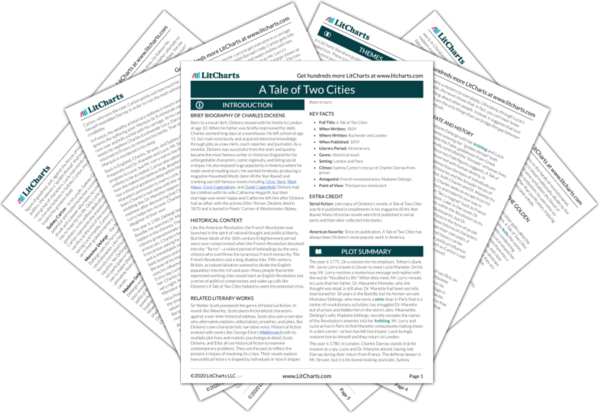The former servant of , Defarge uses his Paris wine shop as a place to organize French revolutionaries. Like his wife, , Defarge is fiercely committed to overthrowing tyranny and avenging injustice. Yet Defarge always retains a shred of mercy, and does not participate in his wife's plot to kill Lucie. This quality of mercy makes Defarge a symbol for the failed Revolution, which ultimately loses sight of its ideals and revels in the violence it causes.
